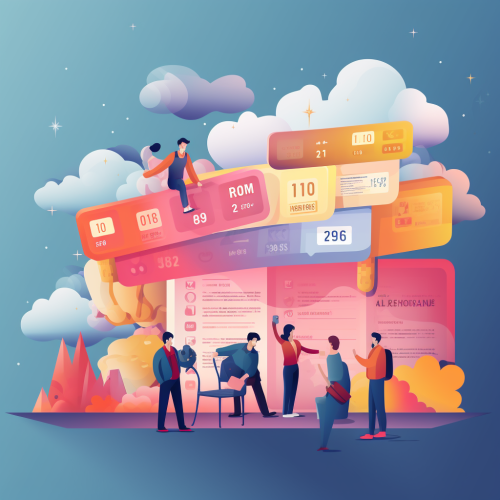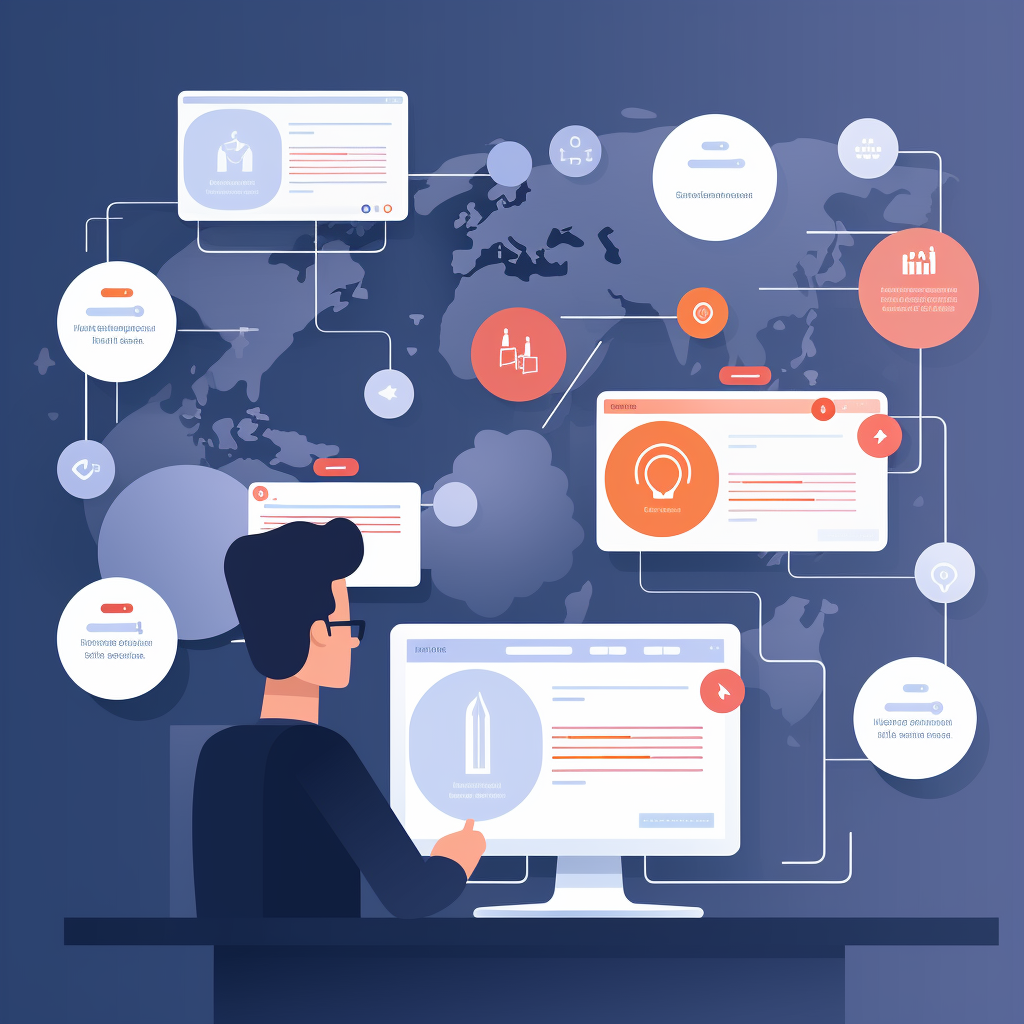Ticket Triage Meaning: Benefits & Applications In Support Tickets
What is Ticket Triaging?
Ticket triaging in customer support is a systematic process of sorting and prioritizing incoming customer support tickets. When customers reach out with queries or issues, these are logged as tickets in a support system.
The ticket triaging process involves quickly assessing the nature of the problem, categorizing it based on type, assigning ticket priority levels, and then routing the ticket to the appropriate support team or individual. Automation may be employed for efficiency, and continuous monitoring ensures timely resolution and customer satisfaction. This method streamlines the support workflow, ensuring that urgent matters receive prompt attention while efficiently allocating resources for comprehensive issue resolution through a service desk ticket triage system.
Why Does Ticket Triaging Matter?
Ticket triaging matters because it streamlines the customer support process by efficiently sorting, categorizing, and prioritizing incoming customer support tickets. This ensures that urgent issues receive prompt attention, resources are allocated effectively, and customers receive timely and appropriate assistance, ultimately leading to improved customer satisfaction and a more efficient support operation.
Properly categorizing and routing tickets to the relevant customer support teams is crucial for ensuring timely and effective resolution of customer issues.
Ticket triaging provides several benefits, contributing to the efficiency and effectiveness of support operations. Here are some key advantages:
Efficient Resource Allocation:
By categorizing and prioritizing customer support tickets, support teams can allocate resources more efficiently. Urgent issues receive prompt attention, preventing bottlenecks and improving overall response times.
Improved Response Times:
Prioritizing support tickets based on urgency ensures that critical issues are addressed promptly. This leads to faster response times and enhances customer satisfaction.
Enhanced Customer Satisfaction:
Timely and accurate resolution of customer issues contributes to higher customer satisfaction. Customers appreciate receiving prompt assistance, especially for urgent matters.
Specialized Expertise:
Ticket triaging enables the routing of tickets to the most suitable support teams or individuals based on their expertise. This ensures that each issue is handled by personnel with the right skills and knowledge.
Reduced Workload for Support Teams:
Automation of routine tasks in the triaging process reduces the workload on support teams. This allows them to focus on more complex issues that require human intervention.
Best Practices for Ticket Triaging
Implementing effective ticket triaging is crucial for streamlined customer support. Here are some best practices:
Automation: Use automation to categorize and assign initial ticket priorities based on predefined rules. This speeds up the ticket triage process and ensures consistency. Implementing support ticket triage can further improve efficiency and customer satisfaction by automating the prioritization and routing of tickets.
Clear Categorization: Develop a clear and comprehensive categorization system for tickets. This helps route them to the right teams or individuals, improving response time and issue resolution.
Defined Priority Levels: Establish clear criteria for assigning priority levels to tickets. This ensures that urgent matters are addressed promptly while preventing backlogs in less critical issues.
Team Specialization: Assign tickets to teams or individuals based on their expertise. This ensures that issues are handled by the most qualified personnel, improving support quality.
Continuous Training: Keep support teams updated on new products, features, and common issues. This empowers them to handle a diverse range of tickets more effectively.
Monitoring and Metrics: Regularly monitor key performance indicators (KPIs) such as response time, resolution time, and customer satisfaction. Use these metrics to identify improvement areas and track the triaging process’s efficiency.
Escalation Protocols: Define clear protocols for escalating tickets when necessary. This ensures that complex or critical issues are quickly escalated to the appropriate level of expertise for resolution.
Real-World Examples of Ticket Triaging
Below are some interesting real-world examples of ticket triaging in various industries.
Ticket Triaging in IT Support
Issue Identification: In an IT support setting, tickets could be categorized based on software bugs, hardware malfunctions, or network issues.
Priority Assignment: Urgent issues like server outages might be assigned the highest priority, while routine software glitches could have a lower priority.
Ticket Triaging in E-commerce Customer Support
Order Inquiries: Tickets may be categorized by the nature of the inquiry, such as order tracking, returns, or product information.
Priority Assignment: Urgent matters like missing shipments or payment issues might be prioritized over general product queries.
Customer support representatives handle the 20% of customer support requests that are complex, important, and require personalization or involvement of specific departments.
Ticket Triaging in Healthcare Support
Patient Inquiries: Tickets could be categorized by the inquiry type, such as appointment scheduling, prescription refills, or medical advice.
Priority Assignment: Urgent health concerns may be prioritized, while routine administrative tasks receive lower priority.
In each of these examples, ticket triaging involves categorizing, prioritizing, and routing tickets to the appropriate team or individual with the expertise to address the specific issue. This helps streamline the resolution process and ensures customer concerns are addressed efficiently.
Setting up ticket triage process
The first step is to identify what kinds of customer problems and demands your customers face, and the organization classifies these problems. The last step in creating a workflow includes defining the roles of customer support agents and AI customer support in ticket triage.
Establish Your Case Categorization Structure

There is no one solution for determining which tickets will be processed. The seriousness of an emergency customer support ticket is an important factor for a business; some companies may sort customer support ticket severity by priority. However, it is essential that managers identify what qualifies as urgent and what qualifies as less priority and, therefore, have to identify the characteristics of different severity levels. Size of customers/revenues.
Define characteristics that denote severity levels
Teammates must identify characteristics that differ in severity to know how to approach the tickets. What makes a distinction between threes and fives? You have to remember all levels of a problem and look at its impact on businesses. A major severity level misstatement is an overly broad or vague definition. Therefore, rather than defining things numerically, it is better to understand which issues could affect your business.
Allocate Agents and Define Roles
Once you get your ticket in the appropriate place, you need the correct person to handle your ticket and wait until it arrives. The problem with sending a ticket to “Network Connectivity buckets” is that nobody else has a way of handling this ticket. For the best possible triage process, allocate customer support agents to the proper team and define roles. Everyone in the team needs the knowledge of tasks to be done and who has other responsibilities. The system eliminates misunderstanding and helps engineers understand the entire system.
Automate Ticket Routing Workflows
Automatization improves the reliability of helpdesks using standard support ticketing. Automating ticket processing can help you prioritize tickets, identify issues, and resolve those issues. Support software specially designed for help desks can retrieve relevant Support histories and send these summaries along with current ticket information. This saves time and effort for the assigned Support Agents and ensures they'll get all the necessary details to resolve any problem.
You can automate routing tickets by setting up automation rules within your ticketing system based on trigger events. These rules define conditions for categorizing tickets and assigning priority levels.

Future Trends and Developments
As ticket triaging continues to evolve, several emerging trends and developments are shaping the future of support ticket management. This section explores key advancements and their implications for improving efficiency, enhancing customer experiences, and driving innovation in support operations.
Advances in AI and Machine Learning for Ticket Triaging
The integration of artificial intelligence (AI) and machine learning (ML) technologies is revolutionizing ticket triaging processes. AI-powered algorithms can analyze large volumes of ticket data, identify patterns, and predict the nature, severity, and resolution time of incoming tickets with remarkable accuracy. By leveraging AI and ML, ticket triaging systems can automate decision-making processes, prioritize tickets more effectively, and route them to the most appropriate teams or agents for resolution. Additionally, AI-driven ticket triaging systems can continuously learn and adapt based on real-time feedback and evolving support dynamics, leading to improved efficiency, faster resolution times, and enhanced customer satisfaction.
Integration with Emerging Technologies such as Chatbots and Virtual Assistants
The integration of ticket triaging systems with emerging technologies such as chatbots and virtual assistants is reshaping how support interactions are handled. Chatbots and virtual assistants serve as the first line of defense in ticket triaging, engaging with customers, gathering initial information, and routing tickets to the appropriate channels for further assistance. By combining ticket triaging capabilities with conversational AI, businesses can provide immediate responses to common inquiries, gather relevant details from users, and streamline the ticket creation process. This integration not only reduces response times but also enhances the overall customer experience by providing instant support and guidance.
Personalization and Hyper-Automation in Ticket Management
Personalization and hyper-automation are emerging as key trends in ticket management, driven by advancements in AI and data analytics. Ticket triaging systems are increasingly incorporating personalization capabilities to tailor support experiences based on individual customer preferences, behavior, and history. By analyzing customer data and interaction patterns, ticket triaging systems can personalize responses, recommendations, and solutions to meet the unique needs of each customer. Furthermore, hyper-automation technologies enable end-to-end automation of repetitive support tasks, from ticket creation and routing to resolution and follow-up. By automating routine processes and workflows, hyper-automation reduces manual intervention, accelerates resolution times, and frees up human agents to focus on more complex or high-value tasks, ultimately improving efficiency and productivity in support operations.
In summary, future trends and developments in ticket triaging are centered around leveraging advanced technologies such as AI, chatbots, virtual assistants, personalization, and hyper-automation to transform support operations. By embracing these innovations, businesses can enhance efficiency, responsiveness, and customer satisfaction, driving continuous improvement and innovation in support ticket management.
Automate Ticket Triage Process With IrisAgent
IrisAgent's AI platform can help automate different steps of the ticket triage process.
Automated Categorization:
IrisAgent's AI, including natural language processing (NLP), can automatically analyze the content of incoming tickets and categorize them based on predefined criteria. This helps in sorting tickets into relevant groups.
Priority Assignment:
IrisAgent can assess the urgency and impact of a ticket, allowing for automatic assignment of priority levels. This ensures that critical issues are addressed promptly.
Keyword Recognition:
IrisAgent can identify keywords and phrases within ticket content to determine the nature of the inquiry or problem. This aids in quick and accurate categorization.
Learning from Historical Data:
Machine learning algorithms can analyze historical ticket data to identify patterns and trends. This information helps improve the accuracy of ticket categorization and prioritization over time.
Automation Workflows:
AI-driven automation workflows can be set up to handle routine and repetitive tasks associated with ticket triage, freeing up human agents to focus on more complex issues.
Smart Routing:
AI can intelligently route tickets to the most appropriate support teams or individuals based on their expertise, ensuring that the right personnel handles each issue.
Frequently Asked Questions
What is ticket triage process?
Ticket triage process is the process of categorizing, prioritizing, and assigning support tickets to appropriate teams or individuals based on predefined criteria.
Why is triaging tickets important?
Triaging tickets is crucial for efficiently managing customer support. It ensures that urgent issues receive prompt attention, resources are allocated effectively, and customers receive timely assistance.
How does one triage tickets?
Ticket triage involves analyzing incoming support tickets, categorizing them based on issue type, assigning priority levels, and routing them to the most suitable support teams or individuals.
What criteria are used for ticket prioritization?
Prioritization criteria may include the urgency of the issue, its impact on the customer, and predefined business rules. High-priority tickets typically involve critical issues that require immediate attention.
Can ticket triage system be automated?
Yes, ticket triage system can be automated using AI-driven tools. Automation helps in the quick and accurate categorization of tickets, reducing manual effort and improving efficiency.
What types of issues are suitable for automation in ticket triaging?
Routine and repetitive tasks, such as categorizing common issues or assigning initial priority levels based on predefined rules, are suitable for automation in ticket triaging.
What are some best practices for implementing ticket triaging?
Best practices include defining clear categories, establishing priority levels, utilizing automation, assigning tickets to specialized teams, implementing escalation protocols, and continuously monitoring and optimizing the process.
Book a demo today to automate your ticket triaging process and increase efficiency.






